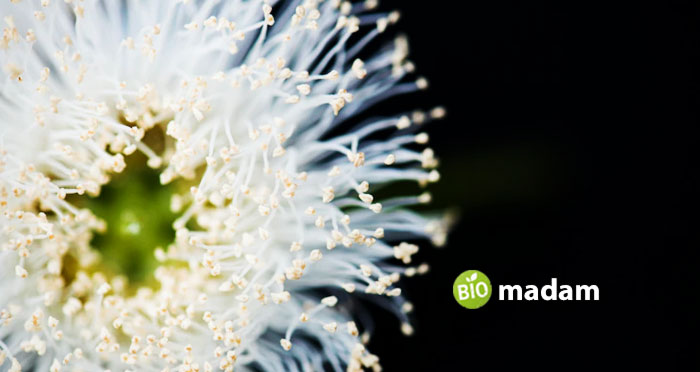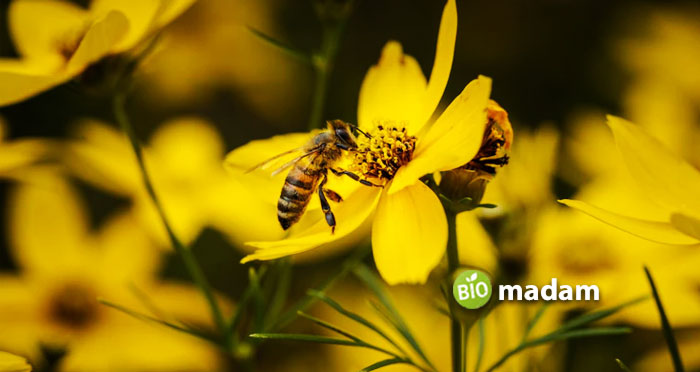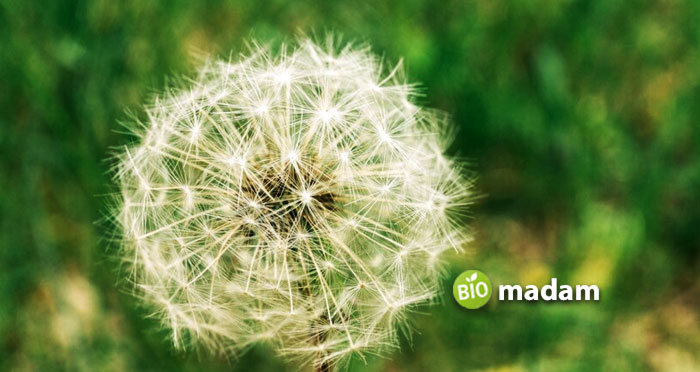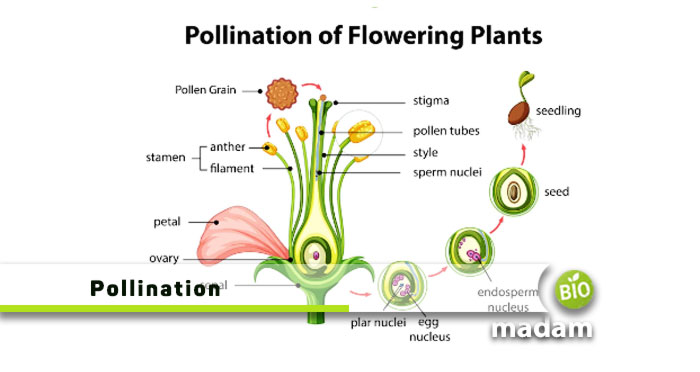Reproduction is an important part of an organism’s lifecycle, whether sexual or asexual. While animals reproduce by fertilizing an egg with sperm through mating, pollination is a process specific to plants. It is an important part of horticulture and botany to ensure plant reproduction. They use pollen grains to transport male gametes to the female part of the plant. Self-pollination and cross-pollination are two different pollination processes to carry the pollen to the other plant.
Here are all the differences between self-pollination and cross-pollination in plants.
Comparison Table
| Characteristics | Self Pollination | Cross-Pollination |
| Definition | Transfer of pollen to flowers of one plant | Transfer of pollen to flowers of other plants |
| Occurrence | 1/4th flowering plants | 3/4th flowering plants |
| Location | Same plant | Different plant |
| No. of Pollen | Small | Large |
| Genetic Identity | Identical | Different |
| Size of Flower | Small | Larger and scented |
| Type of Flower | Perfect | Perfect and imperfect |
| Form of Flower | Opened or closed | Opened |
| Development of Stigma and Anther | Simultaneous | Different times |
| Pollen Transfer | Direct | Requires pollinators |
| Type of Reproduction | Autogamy, cleistogamy, and geitonogamy | Allogamy or heterogamy |
| Genetic Variation | Absent | Present |
| Specie Development | No | Yes |
| Success Rate | Successful | May or may not be |
| Examples | Peaches, potatoes, orchids, cabbage, etc. | Grapes, strawberries, dandelions, tulips, etc. |
What is Pollination?
Plants have processes like fertilization and pollination. Pollination is a process by which pollen grains from the anther (male part of the flower) travel to the stigma (female part of the flower) through a vector. The pollen grains typically travel from a male flower to a female flower of the same specie to multiply.
Pollen grains are fine powdery substances comprising microscopic grains that you may see under a student microscope. They are released by the male part of the flower or a male cone. They contain male gametes comprising DNA and genes carrying all the essential information regarding reproduction and development.
When the pollen grains arrive at the flower’s stigma, they form a pollen tube. The pollen tube transmits the sperm cells from the pollen grain to the ovary through the style. Eventually, the sperm cells reach the ovary and egg cells. The parent plant releases the seed, which grows into the plant.
What is Self-Pollination?
Self-pollination refers to the transfer of pollen from the anther to the stigma of the same flower or different flowers of the same plant.
The process is straightforward and does not take a lot of time. The pollens are carried from the anther to the stigma through water, wind, or animals when transferred to another plant. Self-pollination is the primary method of pollination in most plants.

The transfer of pollen from the anther to the stigma of the same flower is called autogamy. Sometimes multiple flowers have the same stem, and the pollen grains pollinate different flowers on the same stem. This is known as geitonogamy. Furthermore, some flowers are self-pollinated before the flower opens through a process called cleistogamy.
In self-pollination, the stamen and carpel mature at the same time. Thus, it does not typically require birds or insects to transport it to other plants. So, this kind of fertilization does not majorly contribute to different biodiversities as they do not modify genetics.
However, self-pollination allows plants to reproduce when there are no insects or birds in the habitat or ecosystem to carry the pollen grains.
Plants that practice self-pollination are oats, peas, orchids, peaches, and sunflowers.
What is Cross-Pollination?
Cross-pollination is the transfer of pollens from one flower of a plant to the flower of another plant.

Cross-pollination is more diverse than self-pollination. The pollens travel from different flowers of the same species because they inter-share information with each other. Thus, it results in the production of new, genetically diverse plants. The sperm-laden pollen grains are transferred to the egg-bearing flowers of the other plant. This kind of pollination is also known as heterogamy or allogamy.
Typically, cone-bearing plants and flowering plants exhibit this behavior. The pollen grains are transferred by the wind, bees, birds, animals, and insects. Dandelions are the most widely observed example of wind pollination. Alternatively, insects pollinate vascular plants like apple trees. Other plants that exhibit cross-pollination include strawberries, plums, and grapes. Honey bees are the most common pollinators transporting pollen grains from one flower to another.
Similarities between Self-Pollination and Cross-Pollination
- They are common in different flowering plants.
- Self-pollination and cross-pollination contribute to reproduction.
- They may require external pollinators like wind.
Differences between Self-Pollination and Cross-Pollination
Definition
Self-Pollination
It is the transfer of pollen from the anther of a flower to the stigma of the same flower or a different flower of the same plant.
Cross-Pollination
Cross-pollination, on the other hand, is the transfer of pollen grains from the flower of one plant to the flower of another plant of the same species.
Occurrence
Self-Pollination
Around 1/4th of all flowering plants exhibit self-pollination.
Cross-Pollination
Reproduction in almost 3/4th of flowering plants takes place through cross-pollination.
Location
Self-Pollination
It takes place on the same plant and sometimes in the same flower.
Cross-Pollination
On the contrary, this process occurs between the flowers of two different plants.
Number of Pollens
Self-Pollination
Plants that self-pollinate typically produce a smaller number of pollen grains enough to facilitate their flowers.
Cross-Pollination
Cross-pollinating plants produce a large number of pollen grains carried to faraway places for fertilization.
Genetic Identity
Self-Pollination
The flowers involved in self-pollination are genetically identical as they belong to the same plant.
Cross-Pollination
In contrast, cross-pollination involves flowers that are genetically different from each other.
Size of Flower
Self-Pollination
The flowers of self-pollinating plants are smaller in size, with no attraction for pollinators.
Cross-Pollination
Cross-pollination, on the other hand, occurs in plants with bigger, brightly colored flowers having nectar, scent, long stamens, and pistils.
Type of Flower
Self-Pollination
Self-pollination takes place only in perfect flowers.
Cross-Pollination
Alternatively, cross-pollination may take place in both perfect and imperfect flowers.
Reproductive Structure Development
Self-Pollination
The stigma and anther in self-pollinating plants mature simultaneously for the fertilization process.
Cross-Pollination
On the contrary, the anther and stigma in cross-pollinating species develop at different times.
Form of Flower
Self-Pollination
Some plants exhibiting self-pollination go through the process even before the flower opens.
Cross-Pollination
The plant must be open with exposed pollen grains for cross-pollination.
Transfer of Pollen
Self-Pollination
The pollen grains are transferred directly to the flower’s stigma.
Cross-Pollination
Vectors or pollinators like animals, birds, and insects help transfer pollen grains.
Type of Reproduction
Self-Pollination
The types of reproduction exhibited by self-pollination are autogamy, geitonogamy, and cleistogamy.
Cross-Pollination
Cross-pollinating flowers display allogamy or heterogamy.
Genetic Variation
Self-Pollination
Self-pollination does not provide genetic variety and leads to genetic uniformity.
Cross-Pollination
Cross-pollination offers diverse genetic variation, reducing genetic uniformity in the biomes and ecosystems.
Specie Development
Self-Pollination
Self-pollination does not contribute to the development of new species.
Cross-Pollination
Cross-pollination may give rise to new species of the same genus due to the exchange of pollen between different plants.
Success Rate
Self-Pollination
Self-pollination is a sure method of reproduction that rarely fails.
Cross-Pollination
In contrast, cross-pollination may or may not be successful depending on internal and external factors.
Examples
Self-Pollination
Sunflowers, potatoes, peaches, and orchids exhibit self-pollination.
Cross-Pollination
Similarly, cross-pollination is common in strawberries, grapes, daffodils, and dandelions.

The Bottom Line
Self-pollination and cross-pollination are two types of pollination essential to sexual reproduction in plants. The pollen grains from the anther of a flower travel to the stigma of the same flower or another flower of the same plant. Contrarily, cross-pollination is the transfer of pollen grains from the male part of one flower to the female of another flower on a different plant. Cross-pollination takes place with the help of pollinators or vectors like insects, animals, wind, etc. Self-pollination ensures reproduction when no pollinators are available, though it increases genetic uniformity. On the other hand, cross-pollination contributes to genetic diversity by exchanging genes and alleles among different plants.
FAQs
What is the difference between self-pollination and cross-pollination advantages?
Self-pollination does not require pollinators, whereas cross-pollination occurs with the help of pollinators. On the other hand, cross-pollination gives you new varieties and healthier offspring compared to self-pollinated species.
What is a self-pollination example?
Self-pollinating flowers transfer pollen grains from the stigma of the same flower. Common examples of self-pollinating plants include oats, peas, sunflowers, peaches, potatoes, etc.
What are the disadvantages of self-pollination and cross-pollination?
Self-pollination does not result in genetically better or modified species due to fertilization within the same plant or species. Meanwhile, cross-pollination may introduce undesirable traits and waste pollen grains during transport.

Hello, I would like to introduce myself to you! I am Chelsea Rogers, an experienced blog writer for science articles, holding an MPhil degree. My enthusiasm to grab the best knowledge, let it relate to botany, zoology, or any other science branch. Read my articles & let me wait for your words s in the comment section.

